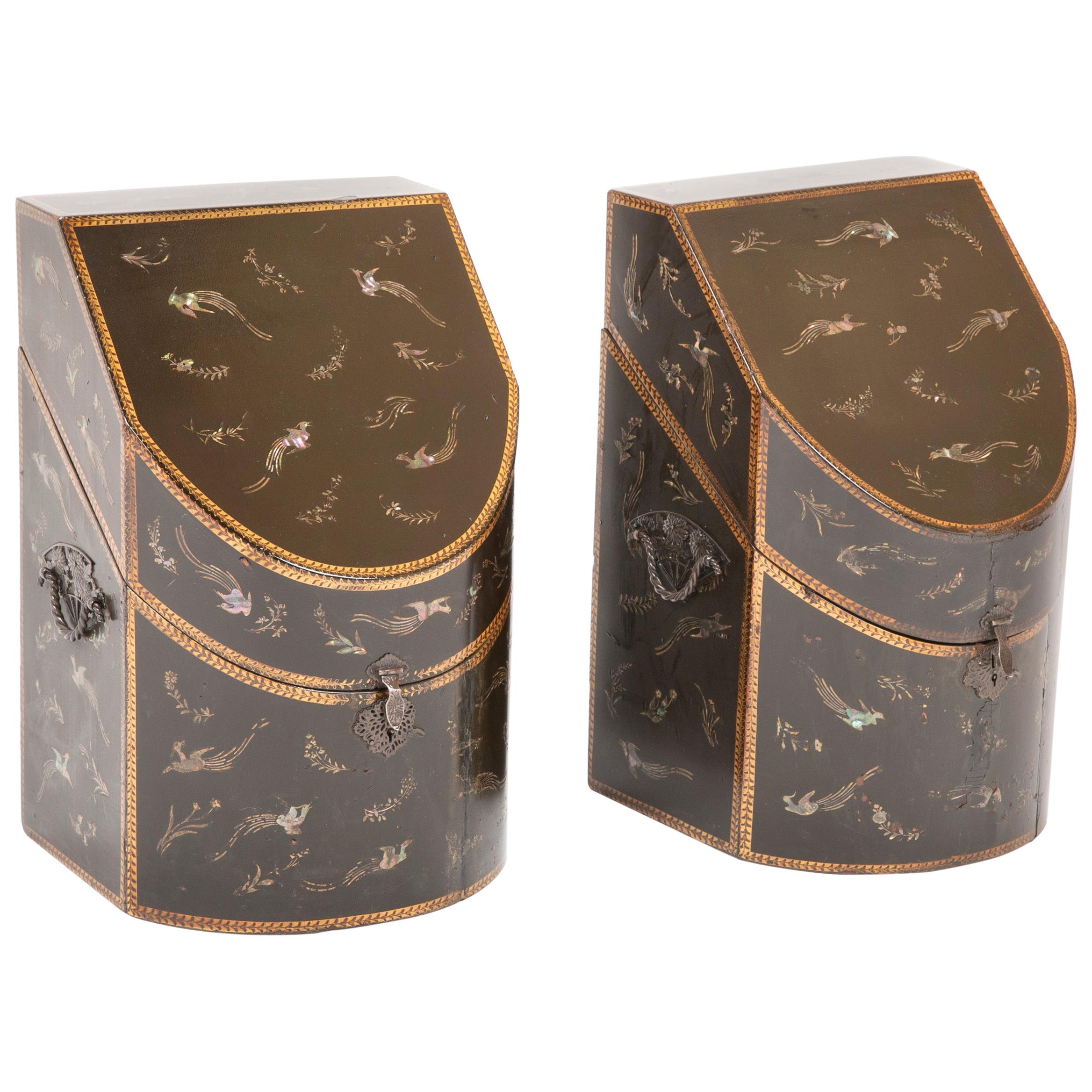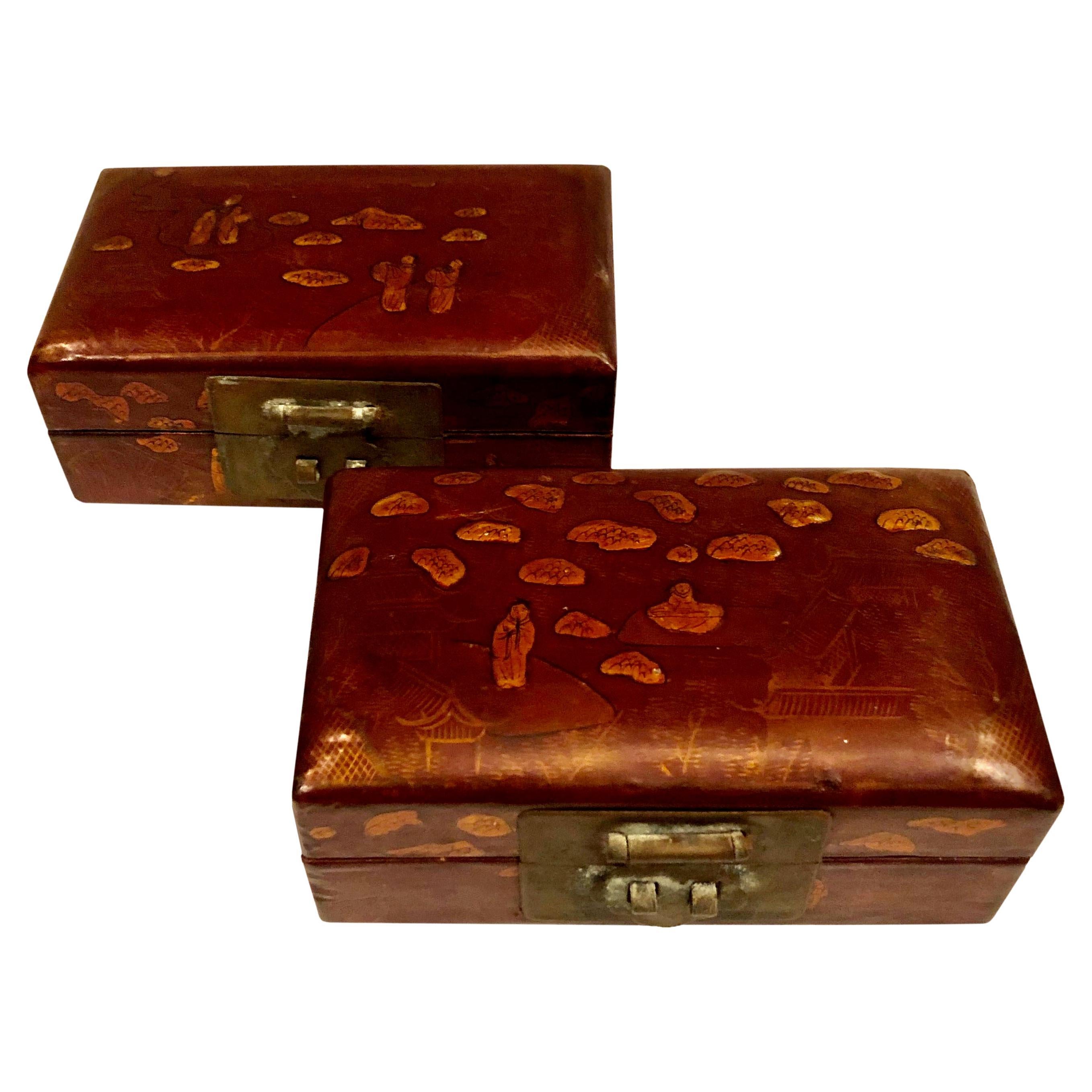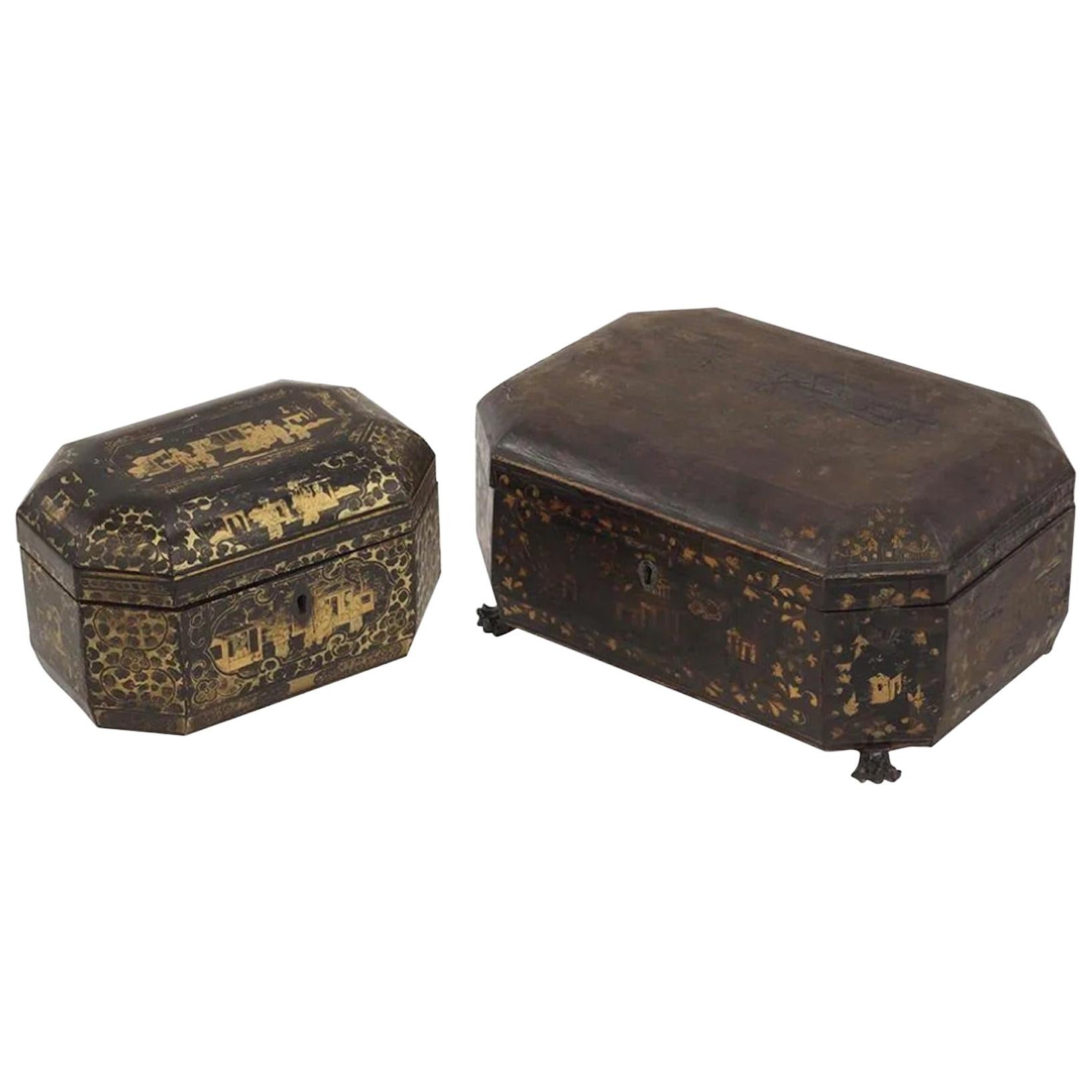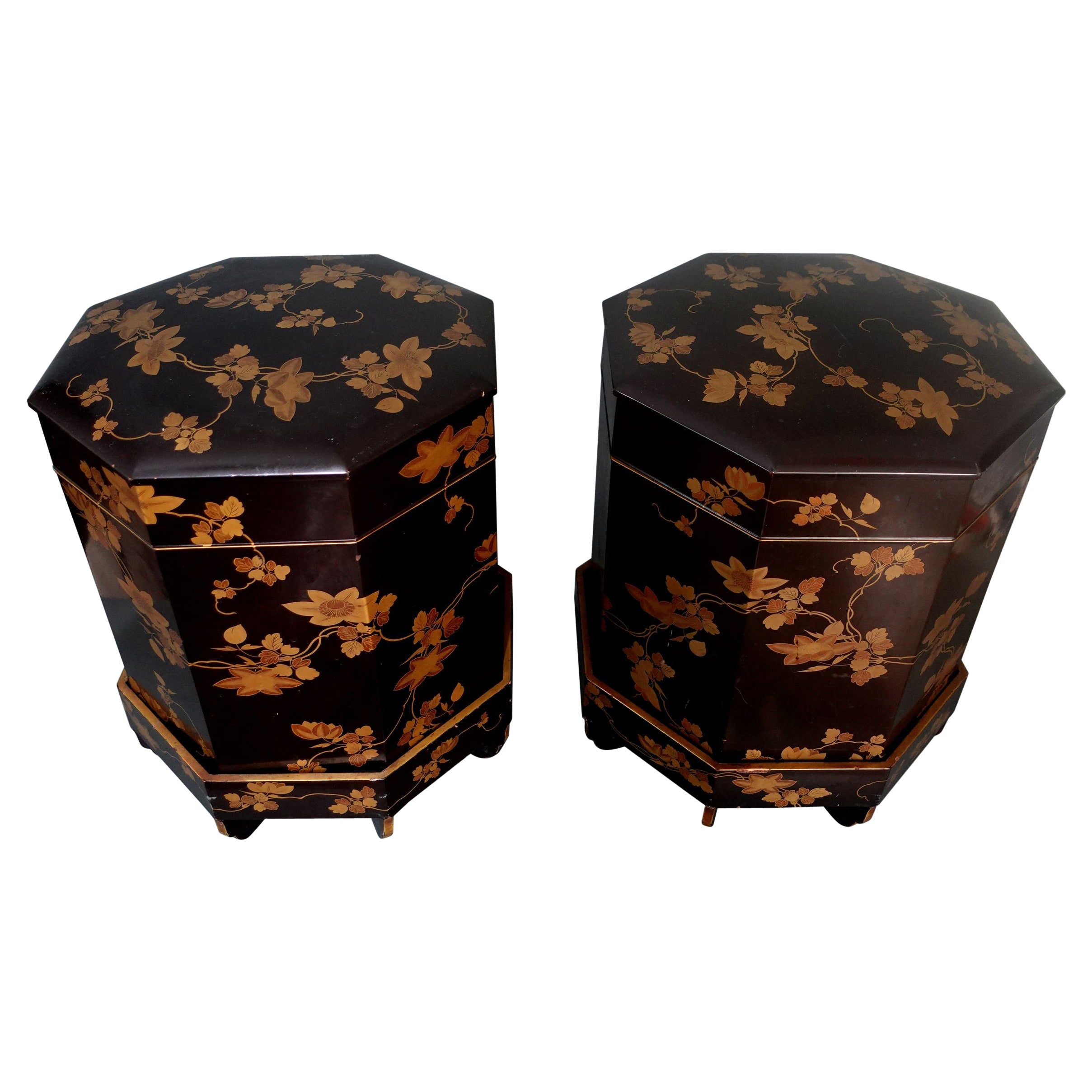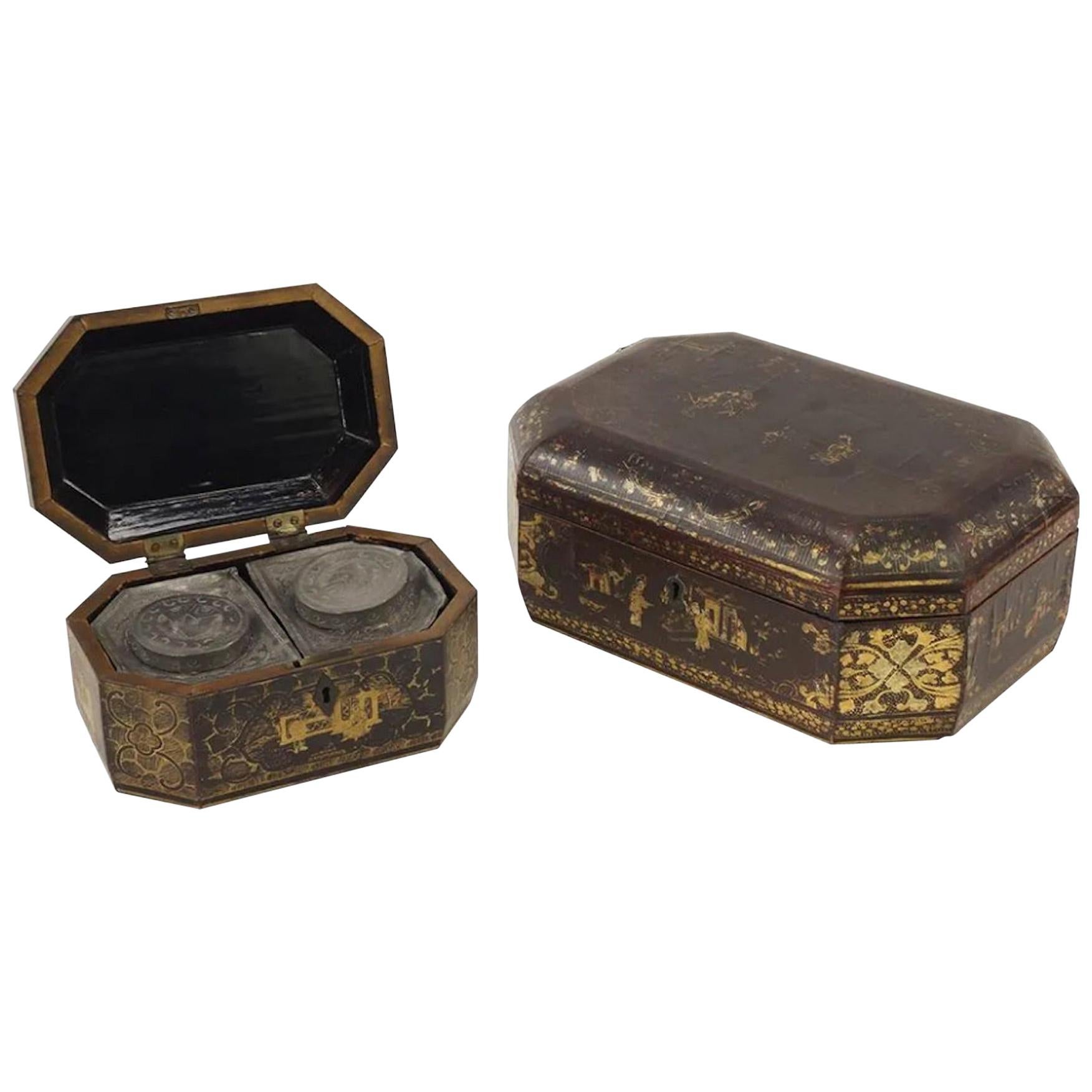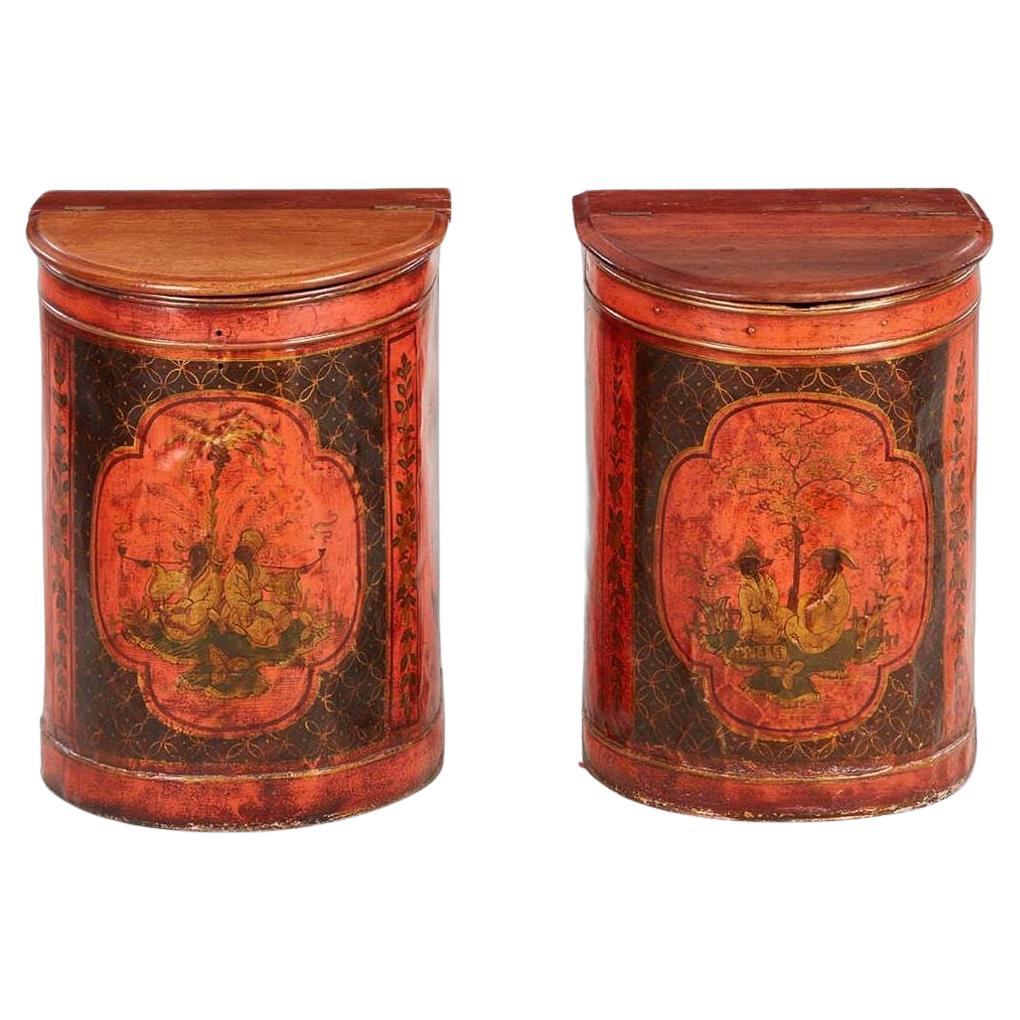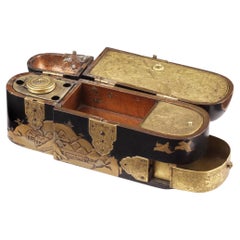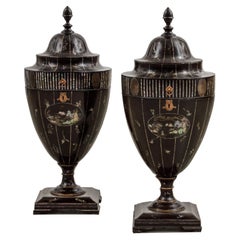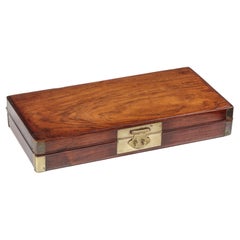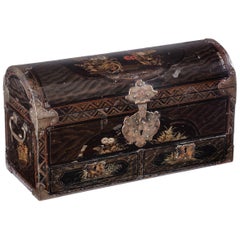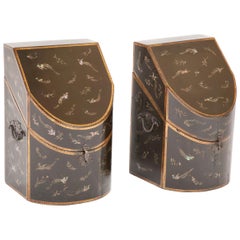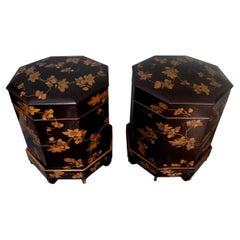Items Similar to Pair of Fine Japanese Export Lacquer Cutlery Knife Boxes, 18th Century
Want more images or videos?
Request additional images or videos from the seller
1 of 5
Pair of Fine Japanese Export Lacquer Cutlery Knife Boxes, 18th Century
$35,254.96
£26,099.32
€29,500
CA$48,784.05
A$53,775.09
CHF 28,137.69
MX$659,803.57
NOK 354,197.74
SEK 331,230.90
DKK 224,612.86
About the Item
A pair of fine Japanese export lacquered cutlery boxes
Kyoto or Nagasaki, late 18th century
H. 33.5 x W. 24 x D. 21 cm
The bow-fronted boxes with sloping lids flat at the top are made of hinoki wood (Cypress), coated with Japanese paper and decorated in lacquer with scattered gold birds and flowers on a nashiji background. The Japanese mounts are made of copper and both boxes still have internal partitions to keep the cutlery upright.
The form of these boxes is similar to a pictorial-style knife box in the collection of the Groninger Museum (inv. 1989- 347), dated between 1730 and 1780, but the style of the decoration is more like that on a knife box in the Peabody Essex Museum in Salem (inv. E62271), which was brought to Salem by James Devereux, Captain of the Franklin, in 1799.
Provenance:
Henriette Jeane Christine van Neukirchen, called Nyvenheim (1807- 1849) and Nicolaas Johan Steengracht van Oostcapelle (1806-1866), thence by descent to the last owners, Ludolphine Emilie baronesse Schimmelpenninck van der Oye (1944) married in 1969 to Roland Daniel van Haersma Buma (1944), the last residents of castle Duivenvoorden near Voorschoten and the great-great-granddaughter of Nicolaas Johan Steengracht van Oostcapelle.
There is no evidence that Nicolaas Johan himself, or any of his or his wife’s ancestors had ever been in Japan. However, Nicolaas’ grandfather (Nicolaas Steengracht, 1754-1840) was a director of both the VOC and WIC (West Indies Company) Chambers of Zeeland in Middelburg is known to have collected Chinese porcelain and Japanese lacquer work, so presumably, Nicolaas’ grandfather asked a captain sailing to Deshima or a VOC official on Deshima to order these two cutlery boxes in Japan.
- Dimensions:Height: 13.19 in (33.5 cm)Width: 9.45 in (24 cm)Depth: 8.27 in (21 cm)
- Materials and Techniques:
- Place of Origin:
- Period:
- Date of Manufacture:1780-1800
- Condition:Wear consistent with age and use.
- Seller Location:Amsterdam, NL
- Reference Number:1stDibs: LU5458229650932
About the Seller
5.0
Recognized Seller
These prestigious sellers are industry leaders and represent the highest echelon for item quality and design.
Established in 1985
1stDibs seller since 2020
23 sales on 1stDibs
Typical response time: 5 hours
- ShippingRetrieving quote...Shipping from: Amsterdam, Netherlands
- Return Policy
Authenticity Guarantee
In the unlikely event there’s an issue with an item’s authenticity, contact us within 1 year for a full refund. DetailsMoney-Back Guarantee
If your item is not as described, is damaged in transit, or does not arrive, contact us within 7 days for a full refund. Details24-Hour Cancellation
You have a 24-hour grace period in which to reconsider your purchase, with no questions asked.Vetted Professional Sellers
Our world-class sellers must adhere to strict standards for service and quality, maintaining the integrity of our listings.Price-Match Guarantee
If you find that a seller listed the same item for a lower price elsewhere, we’ll match it.Trusted Global Delivery
Our best-in-class carrier network provides specialized shipping options worldwide, including custom delivery.More From This Seller
View AllRare 17th Century Japanese Export Lacquer Medical Instrument Box
Located in Amsterdam, NL
A rare Japanese export lacquer medical instrument box
Edo-period, 1650-1700
L. 19 x W. 6 x H. 8.5 cm
This unconventionally shaped lacquer b...
Category
Antique 17th Century Japanese Edo Lacquer
Materials
Gold
Pair of Japanese Lacquer and Mother-of-Pearl Inlaid Knife Urns, circa 1800-1815
Located in Amsterdam, NL
A rare pair of Kyoto-Nagasaki style lacquer and mother-of-pearl inlaid knife urns
Edo period, early 19th century
Measures: Height 71 x diameter 30 cm
?Formed as urns with vertically lifting covers and elongated finials, revealing fitted green velvet lined interiors for knives, decorated overall with birds, flowering stems, faux-fluting and oval panels with landscapes. The square plinth is raised on four bracket feet. Inside the lifting cover of one of the urns are Japanese characters, supposedly indications of some code by the craftsman.
A closely related knife urn, now in the collection of the Peabody Essex Museum, Salem (inv. E 73115), was acquired in Nagasaki by Captain Samuel Gardner Derby of the Margareth of Salem in 1801. Captain Gardner Derby traded in Nagasaki under charter from the VOC (Vereenigde Oostindische Compagnie), the Dutch East India Company. Between 1797 and 1814 Holland was occupied by the French and from 1811 until 1816 Java by
the English. During these periods practically no Dutch shipping was possible between Holland and Batavia (Jakarta) or between Batavia (Jakarta) and Nagasaki. To maintain a minimum amount of shipping between Batavia (Jakarta) and Nagasaki, between 1797 and 1807, the VOC chartered mainly American ships. American captains and officers ordered and bought mainly lacquered furniture in an American-English style, completely different from what the Dutch up till then had ordered. The present knife urns were possibly also ordered and acquired by Captain Gardner Derby during his stay in Deshima/Nagasaki in 1801.
Another similarly neoclassical shaped knife urn in the collection of the Ashmolean Museum Oxford (inv. 1996.17) appears to be signed by woodworker Kiyotomo koreo tsukuru (Kiyomoto made this). The same name, together with an address in the Sanjo-Teramachi District of Kyoto, has been found inside a fragmentary urn in a private collection. This is an indication that European-style furniture was not only lacquered in Japan but made there as well. This undoubtedly is not only true for knife-urns, but all European- style furniture lacquered in Japan after circa 1800 was made by Japanese furniture makers...
Category
Antique Early 19th Century Japanese Anglo-Japanese Lacquer
Materials
Brass
$57,364 / set
Free Shipping
Chinese 17th/18th Century Huanghuali Document Box with Baitong Mounts
Located in Amsterdam, NL
A Chinese Huanghuali document box with baitong mounts
Late Ming/Early Qing dynasty, 17th/18th century
H. 6 x W. 34.8 x D. 17.5 cm
Proven...
Category
Antique Late 17th Century Chinese Ming Furniture
Materials
Brass
Fine Japanese Namban Lacquer Jewelry Casket, 17th Century
Located in Amsterdam, NL
Japanese Namban lacquer transition-style coffer with two drawers
Kyoto/Nagasaki, circa 1650
The cartouches with gilt and red decorations of leaves...
Category
Antique 17th Century Japanese Edo Lacquer
Materials
Cypress
Large Royal Early 17th Century Japanese Lacquer Chest with Gilt-Bronze Mounts
Located in Amsterdam, NL
A large Japanese transitional lacquer chest with gilt-metal mounts
Edo period, early 17th century
The rectangular chest with flat hinged lid decorated in gold, silver, and red ...
Category
Antique Early 17th Century Japanese Blanket Chests
Materials
Bronze
Two Palembang Peranakan Lacquerware Bridal Boxes and a Tray
Located in Amsterdam, NL
Two Palembang Peranakan lacquerware bridal boxes and a tray
South Sumatra, Palembang, lacquer work by Chinese Peranakan artisans, mid 20th century
Woo...
Category
Vintage 1950s Indonesian Decorative Boxes
Materials
Wood, Lacquer
You May Also Like
Rare pair of Japanese Nagasaki Export Lacquered Wood Knife Boxes
Located in Stamford, CT
Rare pair of Japanese Nagasaki Export lacquered wood knife boxes with mother-of-pearl inlay of flowers and birds, now converted to letter boxes...
Category
Antique Early 19th Century Japanese Anglo-Japanese Knife Boxes
Materials
Wood
Early 19th Century Chinese Boxes with Oriental Figures, a Pair
Located in Tampa, FL
A fabulous pair of early 19th century Chinese boxes with hand carved oriental figures on the exterior and Handpainted figures on the interior....
Category
Antique Early 19th Century Chinese Decorative Boxes
Materials
Brass
Two Chinese Export Lacquered Tea Caddy for the English Market, Priced Per Caddy
Located in Buchanan, MI
A two Chinese export lacquered tea caddys for The English Market. With two fitted pewter canisters on the interior. Together with a Chinese export lacq...
Category
Antique 19th Century Regency Tea Caddies
Materials
Wood
A Pair of Large Japanese Lacquer Kaioke Boxes
Located in Norton, MA
Japan, late Edo, two big octagonal covered shell game boxes resting on footed stands, with makie-e decorations depicting flowering vines on a black lacquer ground,
They are still in ...
Category
Antique 19th Century Japanese Decorative Boxes
Materials
Lacquer
$18,500 / set
Two Chinese Export Lacquer Tea Caddy for the English Trade, Priced Per Tea Caddy
Located in Buchanan, MI
A Chinese Export lacquer tea caddy. Gilt lacquered tea caddy with two pewter canister inserts. Together with a larger Chinese export lacquer box with o...
Category
Antique 19th Century Regency Tea Caddies
Materials
Wood
A Rare Pair of Luxury Chinoiserie Tea Cannister Shop Fittings
Located in Greenwich, CT
A rare pair of large-scale tea cannisters with wooden lids over rounded tin bodies each elaborately decorated with bucolic scenes of a pair of figures in Chinese dress in a garden, w...
Category
Antique 1860s English Chinoiserie Decorative Boxes
Materials
Tin
More Ways To Browse
Japan Antique Paper
Gold Knife
Antique Cutlery
Japanese Lacquer Boxes
Japanese Gilt Wood
Japanese Export Porcelain
18th Century Japanese Art
Gold Antique Knife
Pair Chinese Boxes
Japanese Export Silver
Japanese Antique Wood Birds
Silver Antique Japanese Boxes Silver Boxes
Gilt Wood Box
Knife Porcelain
Antique Knife Boxes
Cutlery Box
Silver Box Japan
Antique Cutlery Box
